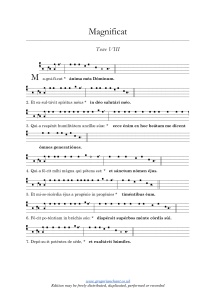This period of music is from the fall of the Roman Empire in 476 AD and ends around 1400, although this date is arbitrary.
- Léonin (fl. 1150s; died ?1201) is the first known significant composer of polyphonic organum
- Pérotin (fl. c. 1200) was a European composer, believed to be French, He was the most famous member of the Notre Dame school of polyphony.
- Philippe de Vitry (October 31, 1291 – June 9, 1361) was a French composer, music theorist and poet. He was the defining music theorist of the early Ars Nova, as well as an accomplished, innovative, and influential composer.
- Guillaume de Machaut (born about 1300 – died 1377), was an important Medieval French poet and composer, who was and is the most celebrated composer of the 14th century. He composed in a wide range of styles and forms and his output was enormous. He was also the most famous and historically significant representative of the musical movement known as the “ars nova”.
Troubadours – The music of the troubadours was monophonic secular song, probably accompanied by instruments, sung by professional, occasionally itinerant, musicians who were as skilled as poets as they were singers and instrumentalists.
Instruments – trumpet, Cornetts, flute recorder, gemshorn, pan flute, lute, mandolin, dulcimer, hurdy-gurdy, Jew’s harp were also popular. Early versions of the organ, vielle and sackbut existed as well.
Vocal music – Plainsong, Gregorian Chant (a type of Plainsong), Organum, Liturgical drama/Religious drama, Troubadour songs (usually about war, chivalry and courtly love), Virelai (see below)
Virelai – One of several types of song in France of the 14th and 15th centuries. It probably did not originate in France, and it takes on several different forms even within the French tradition. Virelai form has three stanzas, each preceded and followed by a refrain. First came the monophonic (single-part) settings of simply rhythmized and syllabic melodies. Guillaume de Machaut wrote monophonic settings of rhythmised and syllabic melodies.
C0NCEPTS ASSOCIATED WITH THE MEDIEVAL PERIOD
Chant, Plainchant, Polyphony and Single Line
| Chant – A series of chords to which the words of psalms are sung in the Church of England. |
| Plainchant – Also known as Plainsong and Gregorian chant. Unaccompanied melody set to words of the Roman Catholic liturgy, such as the Mass. Plainchants are modal and have no regular metre. They follow the rhythm of the Latin words. |
| Polyphony – Texture which consists of two or more melodic lines, possibly of equal importance and which weave independently of each other. |
| Single line – A melody with no accompaniment (Monophony) |


